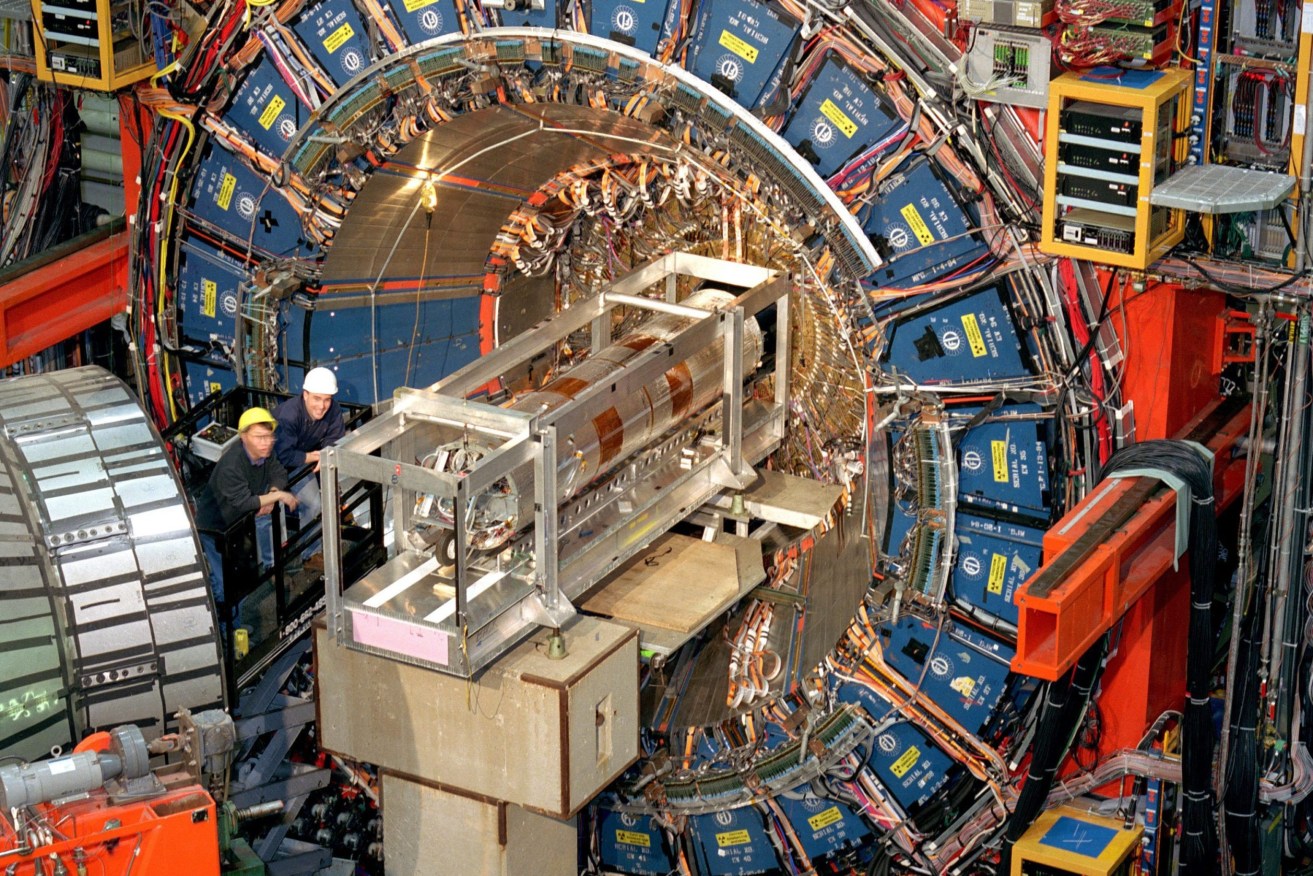Physics puzzle could rewrite sub-atomic rule book
Preliminary results from two experiments suggest something could be wrong with the basic way physicists think the universe works, a prospect that has the field of particle physics both baffled and thrilled.

Part of the US Fermi National Accelerator Laboratory (Fermilab). Photo EPA/FERMILAB
The tiniest particles aren’t quite doing what is expected of them when spun around two different long-running experiments in the United States and Europe.
The confounding results – if proven right – reveal major problems with the rule book physicists use to describe and understand how the universe works at the subatomic level.
Theoretical physicist Matthew McCullough of CERN, the European Organisation for Nuclear Research, said untangling the mysteries could “take us beyond our current understanding of nature”.
The rule book, called the Standard Model, was developed about 50 years ago.
Experiments performed over decades affirmed over and again that its descriptions of the particles and the forces that make up and govern the universe were pretty much on the mark – until now.
“New particles, new physics might be just beyond our research,” Wayne State University particle physicist Alexey Petrov said.
“It’s tantalising.”
The US Energy Department’s Fermilab announced results on Wednesday of 8.2 billion races along a track outside Chicago that while ho-hum to most people have physicists astir: the magnetic field around a fleeting subatomic particle is not what the Standard Model says it should be.
This follows new results published last month from CERN’s Large Hadron Collider (LHC) that found a surprising proportion of particles in the aftermath of high-speed collisions.
Petrov, who wasn’t involved in either experiment, was initially sceptical of the LHC results when hints first emerged in 2014.
With the latest more comprehensive results, he said he is now “cautiously ecstatic”.
The point of the experiments, explains Johns Hopkins University theoretical physicist David Kaplan, is to pull apart particles and find out if there’s “something funny going on” with both the particles and the seemingly empty space between them.
“The secrets don’t just live in matter. They live in something that seems to fill in all of space and time. These are quantum fields,” Kaplan said.
“We’re putting energy into the vacuum and seeing what comes out.”
Both sets of results involve the strange, fleeting particle called the muon.
The muon is the heavier cousin to the electron that orbits an atom’s centre.
But the muon is not part of the atom, it is unstable and normally exists for only two microseconds.
After it was discovered in cosmic rays in 1936 it so confounded scientists that a famous physicist asked “Who ordered that?”.
“Since the very beginning it was making physicists scratch their heads,” said Graziano Venanzoni, an experimental physicist at an Italian lab, who is one of the top scientists on the US Fermilab experiment, called Muon g-2.
The experiment sends muons around a magnetised track that keeps the particles in existence long enough for researchers to get a closer look at them.
Preliminary results suggest that the magnetic “spin” of the muons is 0.1 per cent off what the Standard Model predicts.
That may not sound like much but to particle physicists it is huge – more than enough to upend current understanding.
Researchers need another year or two to finish analysing the results of all of the laps around the 14-metre track.
If the results don’t change, it will count as a major discovery, Venanzoni said.
Separately, at the world’s largest atom smasher at CERN, physicists have been crashing protons against each other there to see what happens after.
One of the particle colliders’ several separate experiments measures what happens when particles called beauty or bottom quarks collide.
The Standard Model predicts that these beauty quark crashes should result in equal numbers of electrons and muons.
It’s sort of like flipping a coin 1000 times and getting about equal numbers of heads and tails, said LHC beauty experiment chief Chris Parkes.
But that’s not what happened.
Researchers pored over the data from several years and a few thousand crashes and found a 15 per cent difference, with significantly more electrons than muons, experiment researcher Sheldon Stone of Syracuse University said.
Neither experiment is being called an official discovery yet because there is still a tiny chance that the results are statistical quirks.
Running the experiments more times – planned in both cases – could, in a year or two, reach the incredibly stringent statistical requirements for physics to hail it as a discovery, researchers said.
-AAP




